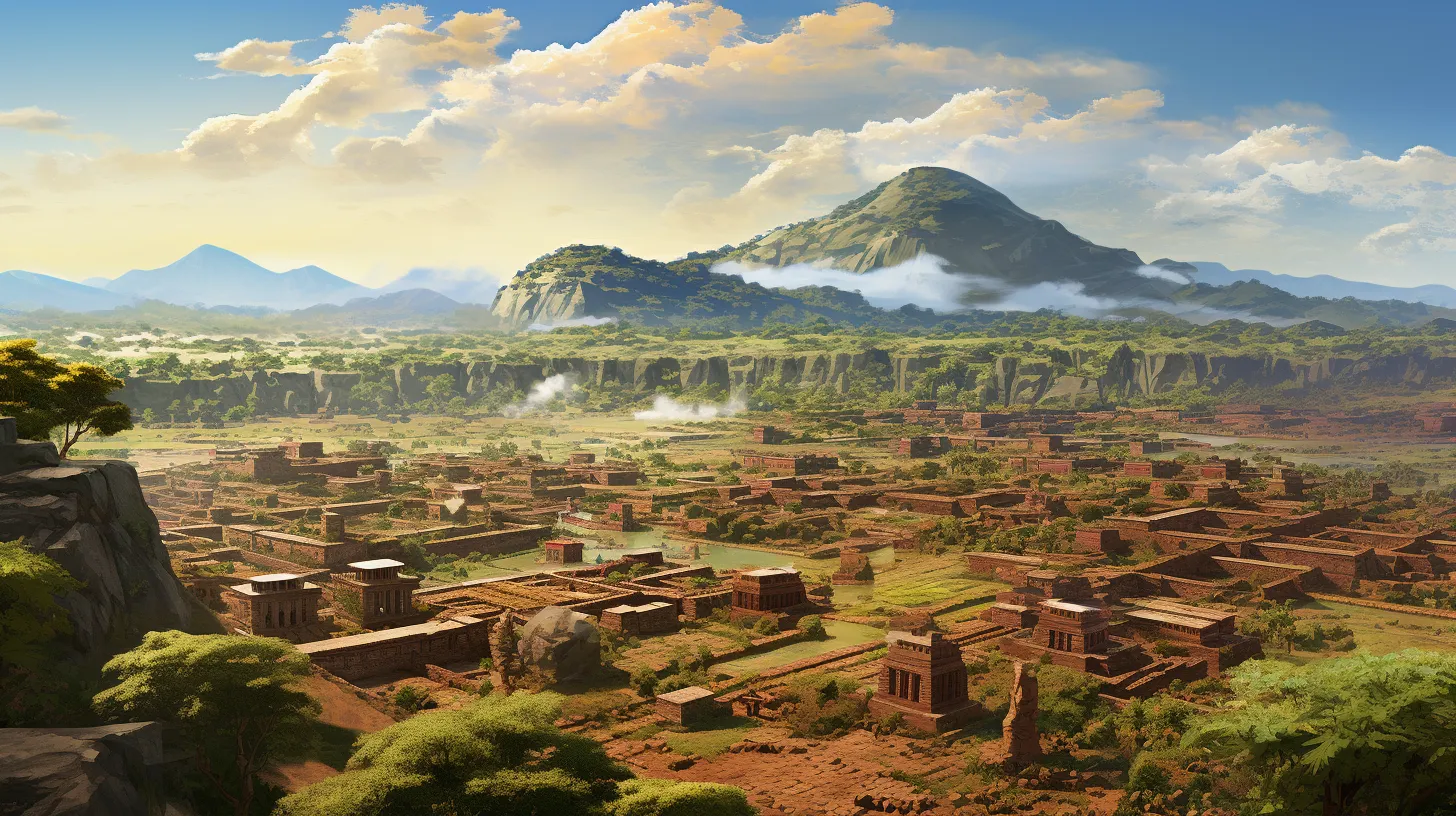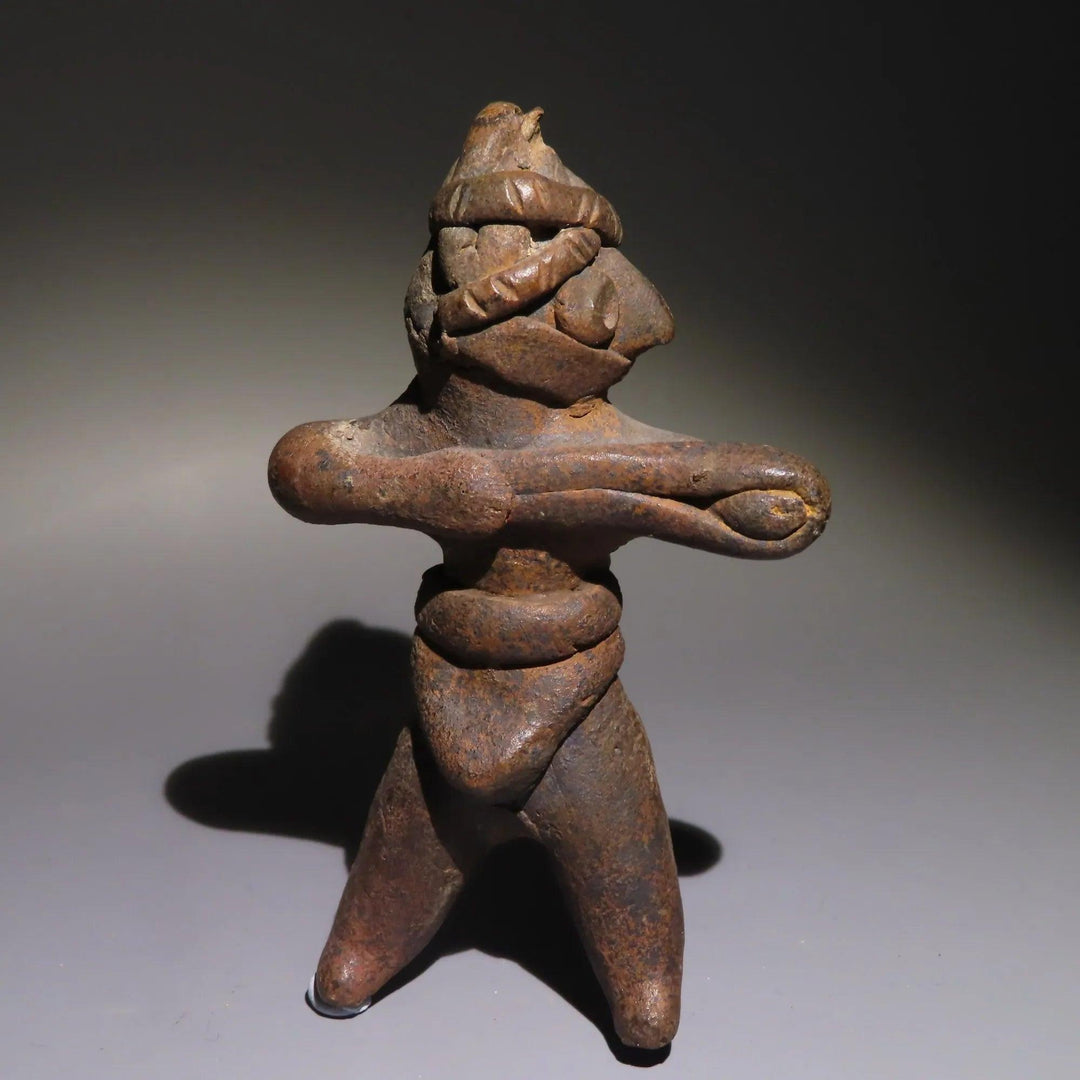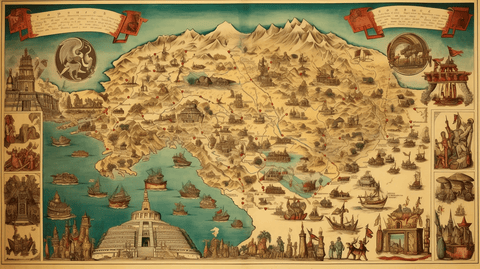
Nayarit: Artifacts from the Ancient West Mexican Traditions (200BCE - 500CE)
Delve into the world of ancient Nayarit with our collection of genuine artifacts. Experience the artistry and rituals of a culture known for its distinctive ceramic figures, burial traditions, and vibrant depictions of daily life.
Nayarit - located in present-day western Mexico, was home to a complex of ancient cultures that thrived between 200 BC and 500 AD. These societies, often collectively referred to as the West Mexican cultures, are particularly renowned for their shaft tombs and associated ceramic art.
Key Highlights:
- Shaft Tombs: Unique to the region, these tombs consisted of vertical shafts leading to burial chambers, housing the deceased and a variety of grave goods.
- Ceramic Figures: Nayarit artisans crafted detailed ceramic figures, depicting scenes of daily life, rituals, animals, and mythical beings.
- Architectural Models: Miniature ceramic models of houses and villages offer insights into the architectural practices and societal structures of ancient Nayarit.
- Ritualistic Practices: The ceramics and burial goods provide clues to the spiritual beliefs, rituals, and cosmology of the Nayarit cultures.
Regions: Nayarit's ancient cultural influence spanned several key areas of West Mexico:
- Northern Nayarit: Known for its distinct ceramic styles and intricate figurines.
- Southern Nayarit: Home to a variety of shaft tombs and associated burial traditions.
- Neighboring Jalisco and Colima: Regions with similar cultural practices and shared artistic traditions.
Valued Materials: The artisans of Nayarit, with their skilled craftsmanship, utilized various materials:
- Clay: Predominantly used for crafting the region's renowned ceramic figures and vessels.
- Shell and Stone: Employed for making jewelry, ornaments, and ritualistic items.
- Obsidian: Used for crafting tools, weapons, and ceremonial objects.
- Pigments: Utilized for decorating ceramics with vibrant colors and intricate designs.
Relevant Time Periods: The history of ancient Nayarit can be segmented based on archaeological phases and findings:
- Formative Period (c. 200 BC–100 AD): Early development of Nayarit's cultural and artistic traditions.
- Classic Period (c. 100–400 AD): The zenith of Nayarit's artistic expression, marked by the proliferation of shaft tombs and ceramic art.
- Late Classic Period (c. 400–500 AD): Transitionary phase leading to the decline of the region's distinct cultural practices.
Step into our curated collection of Nayarit artifacts, each echoing tales of ancient rituals, ceremonies, and daily life. From detailed ceramic figures capturing moments of dance and celebration to architectural models showcasing the design of ancient dwellings, immerse yourself in the rich heritage of a culture that once flourished in the heart of West Mexico





